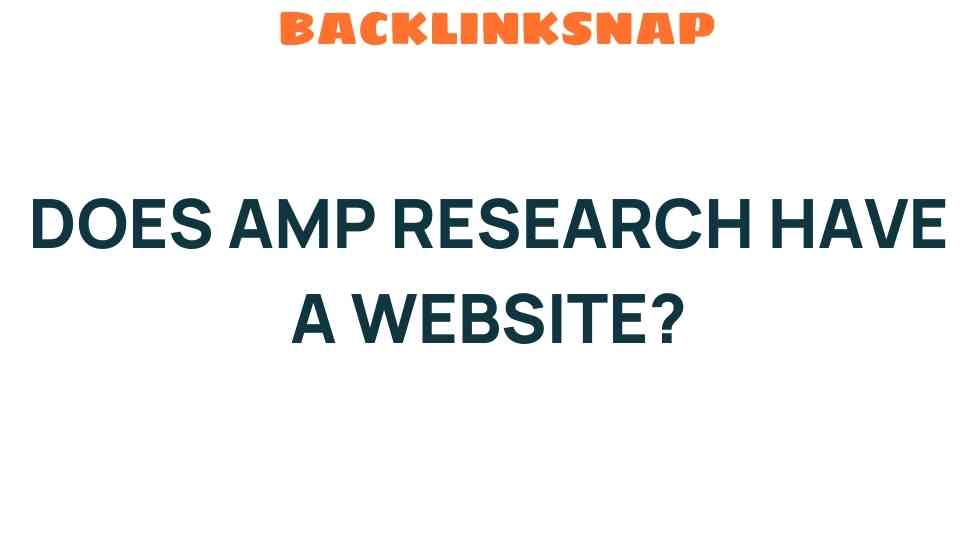Is There an Official Website for AMP Research? Discover the Truth!
When it comes to enhancing the performance and aesthetics of vehicles, particularly trucks, AMP Research stands out as a leading name in the industry. Specializing in innovative automotive accessories, suspension systems, and aftermarket parts, this brand has gained a loyal following among enthusiasts. However, a common question that arises is whether there is an official website for AMP Research where one can find comprehensive product information and details about their offerings. In this article, we’ll delve into the brand’s online presence, explore its product range, and provide insights into why AMP Research is a go-to choice for performance upgrades.
Understanding AMP Research and Its Offerings
Founded with a mission to enhance the performance of trucks and SUVs, AMP Research has carved a niche in the automotive accessories market. Their product lineup includes:
- Power Steps: Automatic running boards that deploy when doors open, providing convenience and style.
- Bed Extenders: Accessories that increase cargo capacity for trucks.
- Suspension Systems: Upgrades that improve a vehicle’s ride quality and handling.
- Performance Upgrades: Custom parts designed to enhance power and efficiency.
These products are particularly popular among truck owners who desire both functionality and aesthetics in their vehicles. The integration of advanced technology in their designs ensures that users receive reliable products that stand the test of time.
The Official AMP Research Website
Now, let’s get to the crux of the matter: is there an official website for AMP Research? Yes, there is! The official website for AMP Research is www.amp-research.com. This site serves as a comprehensive resource for anyone interested in their products.
On the AMP Research official website, you can find:
- Detailed Product Information: Each product page includes specifications, features, and installation guides.
- Dealer Locator: A tool to find authorized dealers near you for purchasing or installing products.
- Warranty Information: Clear details about product warranties and support options.
- Customer Support: Access to FAQs and contact information for any inquiries.
The website is designed to cater to both new and seasoned automotive enthusiasts, providing everything needed to make informed decisions about aftermarket parts and accessories.
Benefits of Using AMP Research Products
Choosing AMP Research for automotive upgrades comes with numerous benefits:
- Quality and Durability: Products are made from high-grade materials, ensuring longevity and performance.
- Innovative Designs: AMP Research is at the forefront of technology, often introducing cutting-edge features.
- Improved Functionality: Many of their products are designed with user convenience in mind, making everyday usage easier.
- Enhanced Aesthetics: Upgrades not only boost performance but also enhance the visual appeal of vehicles.
From my personal experience, installing AMP Research products has transformed my truck into a more capable and stylish vehicle. The ease of accessing the bed with Power Steps and the increased ability to haul cargo with a bed extender have made a significant difference in my day-to-day tasks.
How to Purchase AMP Research Products
Purchasing products from AMP Research is straightforward. While their official website lists all available products, you can also find them at authorized dealerships and retailers across the country. Here’s how you can proceed:
- Visit the official AMP Research website.
- Use the dealer locator tool to find a nearby authorized dealer.
- Contact the dealer for availability and pricing.
- Consider purchasing directly through the website if options are available.
Supporting local dealers not only helps your community but often ensures that you get the best installation advice and support for your new upgrades.
Common FAQs About AMP Research
1. What types of products does AMP Research offer?
AMP Research offers a variety of automotive accessories including running boards, bed extenders, suspension systems, and various performance upgrades for trucks and SUVs.
2. Is the AMP Research website user-friendly?
Yes, the official website is designed to be user-friendly, with clear navigation and detailed product information to help customers easily find what they need.
3. Are AMP Research products easy to install?
Many AMP Research products come with straightforward installation instructions. However, for some systems, professional installation is recommended to ensure optimal performance.
4. Does AMP Research provide warranty for their products?
Yes, AMP Research offers warranties on their products. Warranty details can be found on their official website.
5. Can I find AMP Research products at local retailers?
Absolutely! AMP Research products are available at various automotive accessory retailers and authorized dealers. You can use their website to locate a dealer near you.
6. Are there any performance upgrades available for specific vehicle models?
Yes, AMP Research designs products tailored to specific vehicles, ensuring compatibility and peak performance. Check their website for model-specific options.
Conclusion
In conclusion, if you’re looking to enhance your vehicle’s performance and aesthetics, AMP Research is undoubtedly a leading option in the automotive accessories world. Their official website serves as a valuable resource for product information, purchasing options, and customer support. With a commitment to quality and innovation, AMP Research not only meets but often exceeds customer expectations. So, whether you’re interested in suspension systems, performance upgrades, or truck accessories, you can trust AMP Research to deliver top-notch products that will elevate your driving experience. Don’t hesitate to visit their official website to discover all that they have to offer!
This article is in the category E-commerce Growth and created by BacklinkSnap Team




